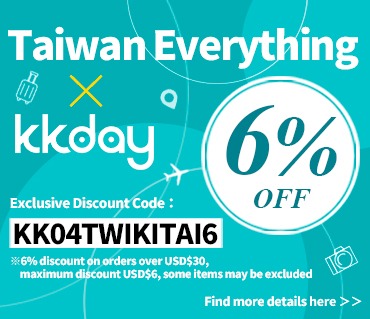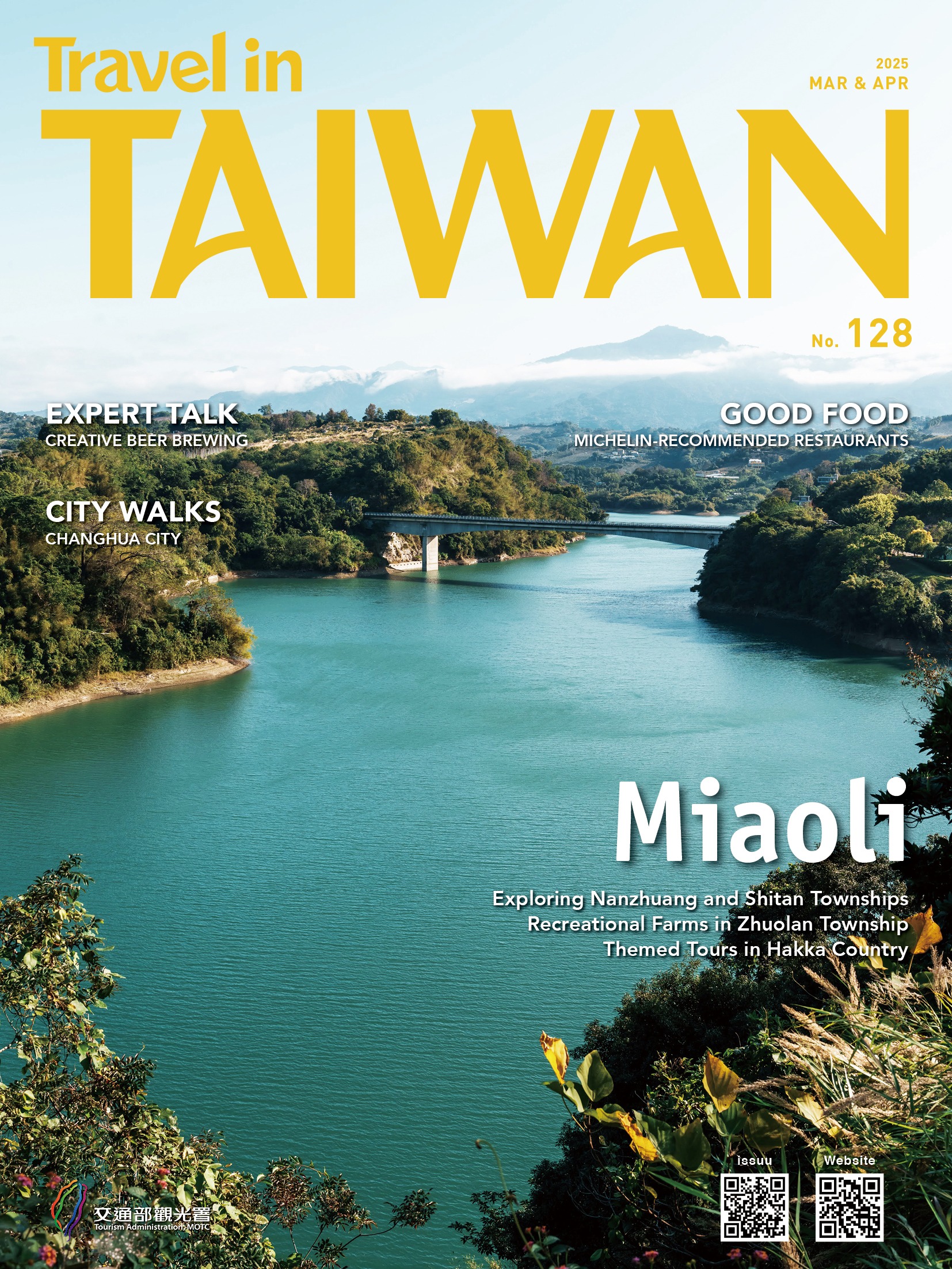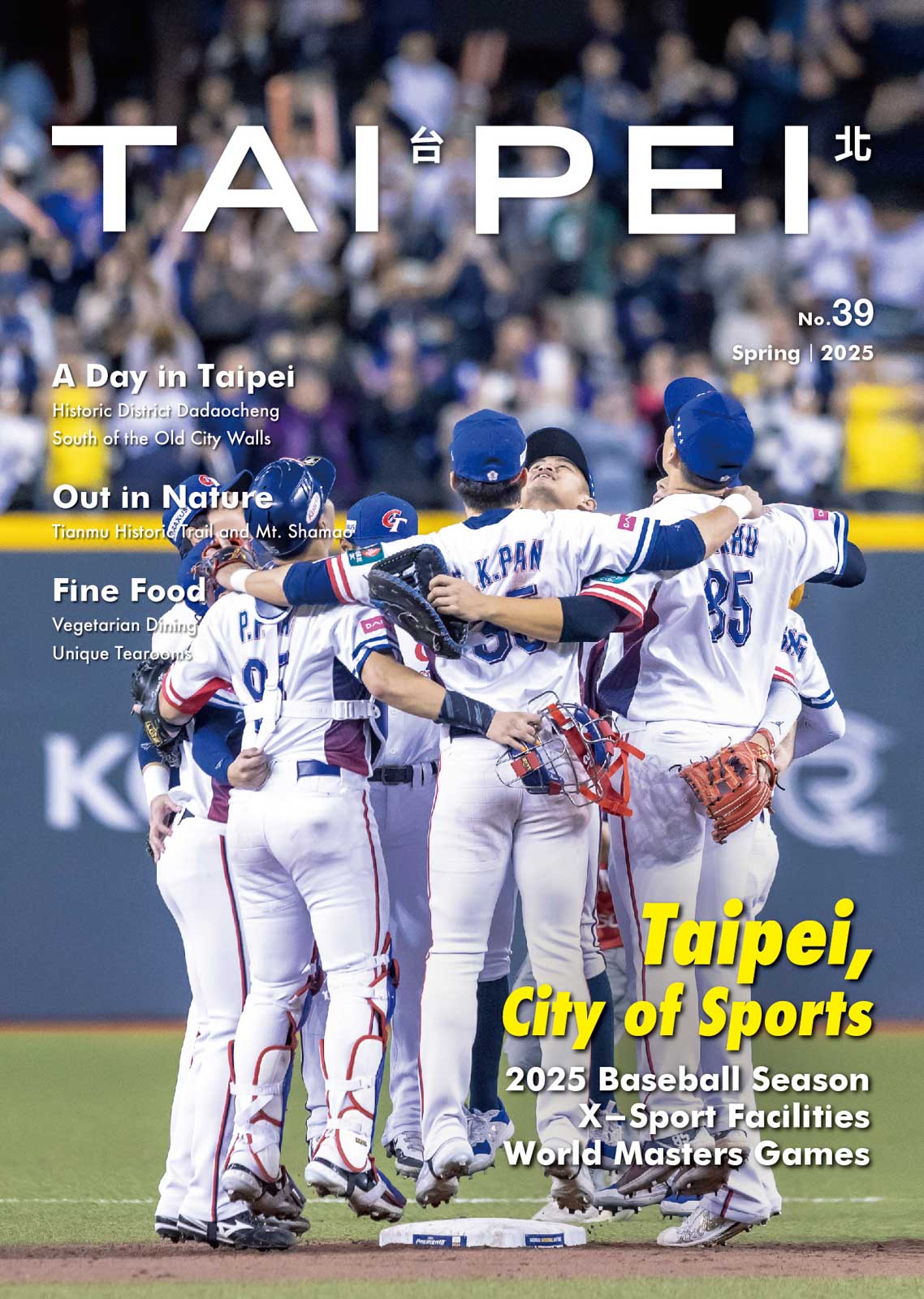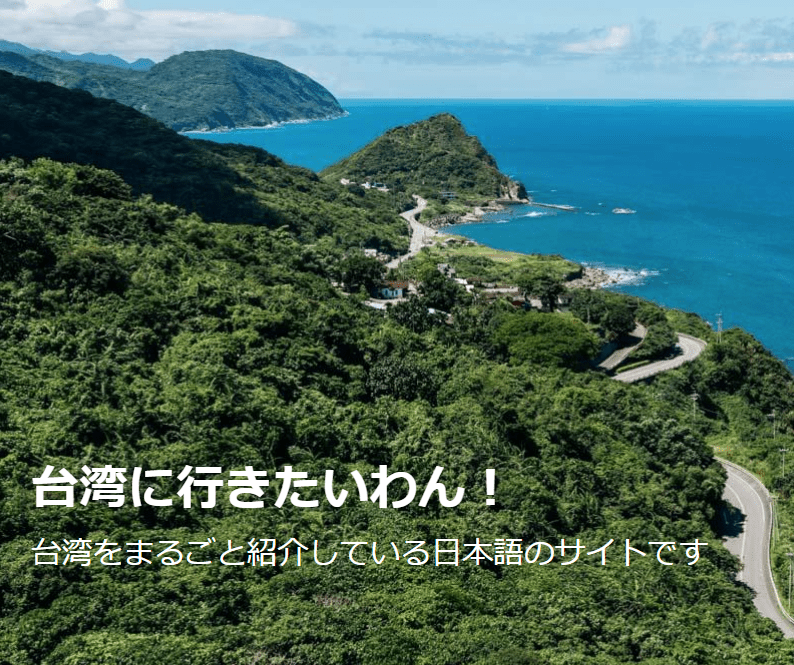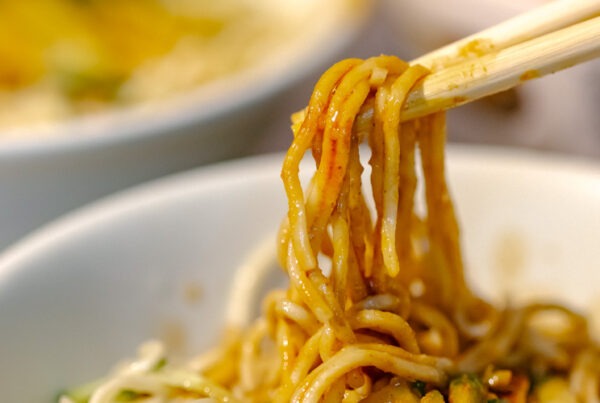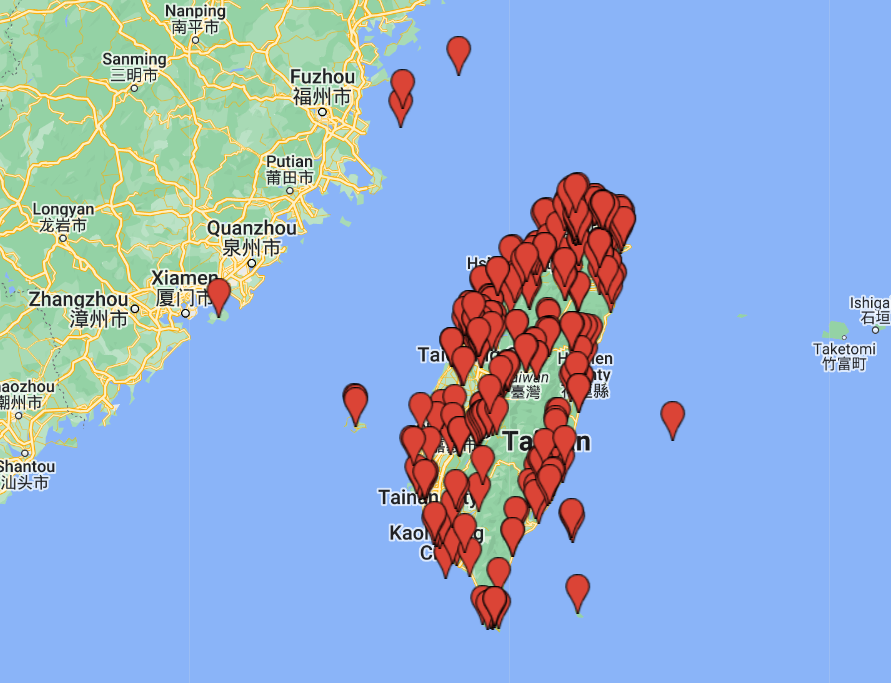Getting to Know Taipei’s Xinyi District
TEXT | RICK CHARETTE
PHOTOS | VISION
Taiwan’s epicenter for consumer glamour is eastern Taipei’s Xinyi District. Teeming day and night with folks on shopping/entertainment outings – a “must” destination in all international travel guides – it bristles with sleek big and bold architectural statements and sophisticated malls/department stores, restaurants, cafés, nightspots, and theaters. Harmoniously blending with the predominant posh ultra-modern are important heritage complexes metamorphosed into trendy glam-life gathering spots.
Like a giant lighthouse, the heaven-searching Taipei 101 tower acts as a beacon to people traveling the city. Its most iconic landmark, the massive spire climbs skyward 508m and, yes, has 101 floors. Taiwan’s fastest elevators, racing along at 1,010m per minute, fly you to the Observatory (entry fee) on the 89th floor in just 37 seconds. Apart from the indoor observation deck, there is also access to an enclosed outdoor deck (91st floor). As you’d imagine, the views of the humming Taipei Basin floor and surrounding mountains are extraordinary.
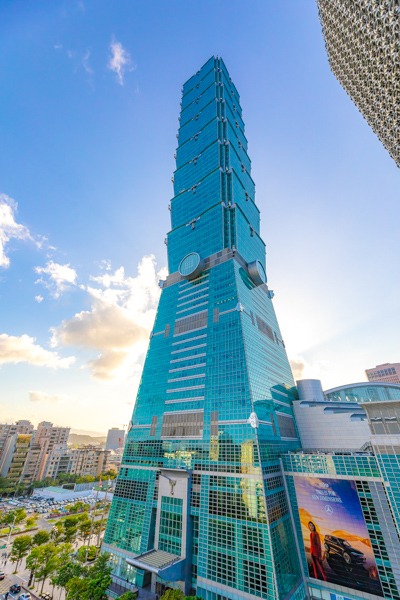
Spice up the thrill further with the test-your-courage Skyline460 experience (separate fee) – a safety-harness excursion on an open outdoor deck on the 101st floor. Observatory entry also lets you examine the mind-challenging tuned mass damper, the world’s largest wind-damper sphere (weight 660 tons, diameter 5.5 meters).
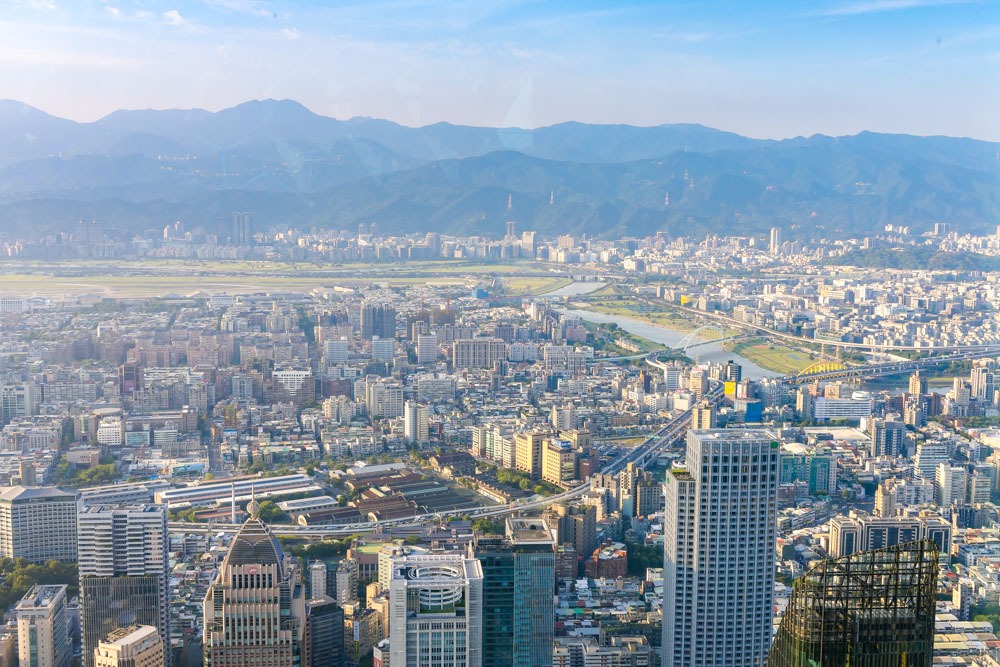

Elsewhere, the tower is sprinkled with high-end restaurants and cafés offering terrific eagle-eye vistas. Especially recommended is Taipei’s highest café, the art-déco Simple Kaffa Sola, on the 88th floor. Most visitors also spend time in the chic Taipei 101 Mall, which takes up the multi-story “pedestal” at the tower’s base.
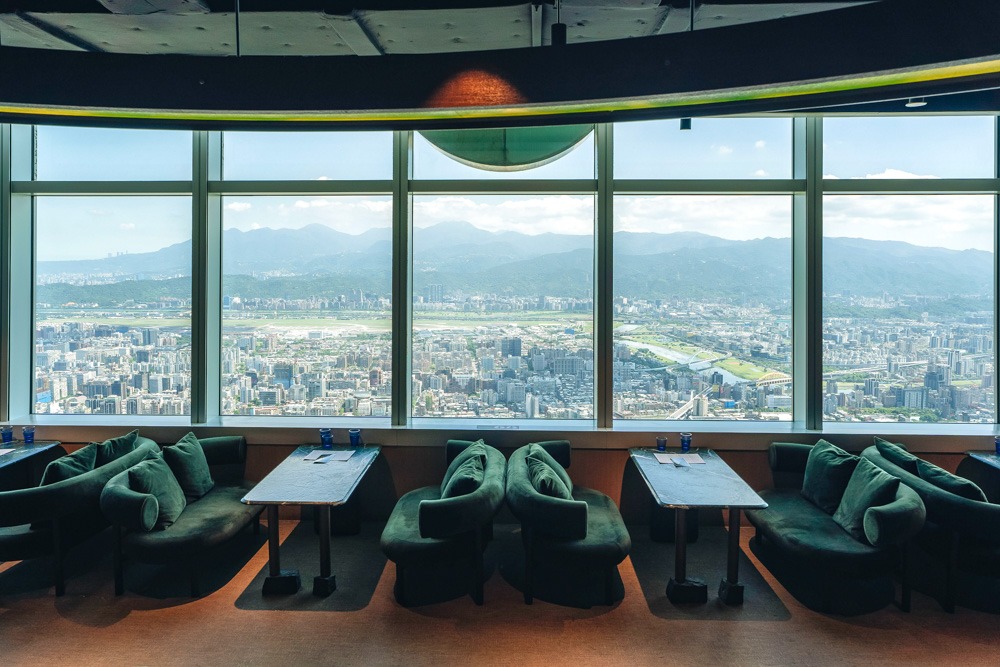
Taipei 101 Observatory
Add: No. 45, Shifu Road, Xinyi District, Taipei City
(台北市信義區市府路45號)
Tel: (02) 8101-8800
Hours: 11am-7pm, Sat, Sun, and holidays 10am-7pm
Website: www.taipei-101.com.tw
Four Four South Village
A short walk west from Taipei 101, just south of Xinyi Road, is a time portal into Taiwan’s past, Four Four South Village. This heritage complex is a remnant section of a military dependents’ village – the first built in Taipei – constructed for military personnel and their families when the Nationalists vacated China with the Chinese Civil War’s denouement. Saved from the wrecking ball after the turn of this century, it has been transformed into a cultural park. The sheeny Taipei 101 monolith looming over the village provides for captivating old/new photo juxtapositions.
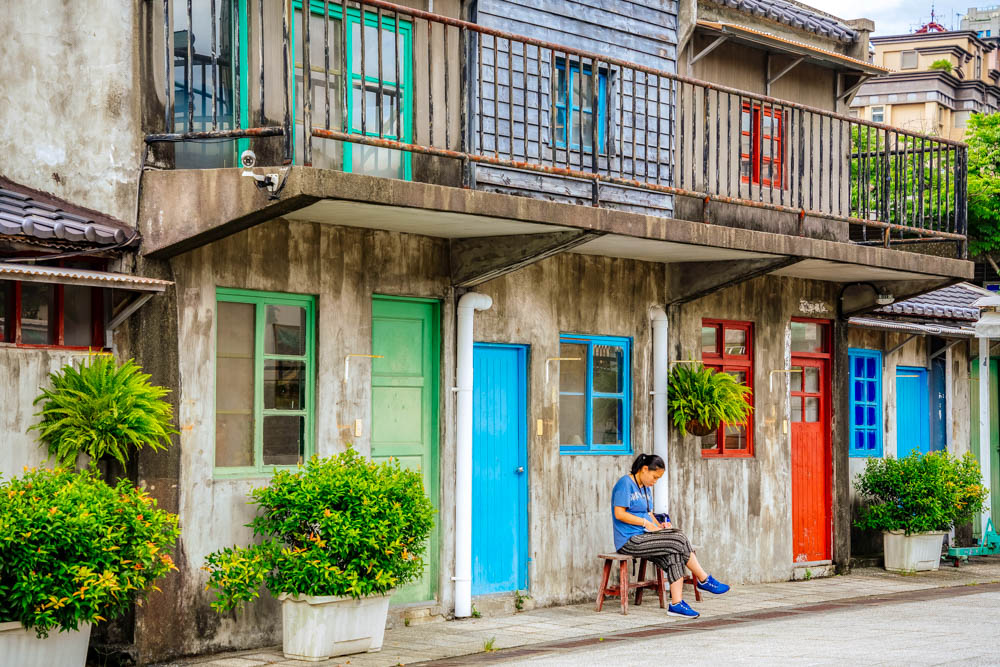
New village “residents” in the tight-packed concrete-building enclave include a compact museum with a military village theme; Good Cho’s (www.goodchos.com.tw), a café/diner long in place and famous for its fresh-made bagels, which sell out quickly, and with both a retail space for local, sustainable handicraft products and a section for local craft-beer maker Taiwan Head Brewers; a tea drinks and desserts shop; a performance theater; and an irregular weekend indie handicrafts/food market.
Xinyi Commercial Area
This area – Taipei 101 its crown architectural jewel – framed by Zhongxiao (north side), Keelung (west), Xinyi (south), and Songde (east) roads, is sometimes called “Taipei’s Manhattan.” It’s part of the larger Xinyi Planning District, a low-density development initiative launched in the 1990s to transform the area east of the National Dr. Sun Yat-sen Memorial Hall into an international shopping/entertainment/recreation/financial zone. Today, the country’s highest property values are found here, and the city proudly proclaims that the area has the world’s highest density of malls/department stores.
Before going on an in-depth walkabout exploration, a good idea is to visit the multi-floor Discovery Center of Taipei (www.discovery.gov.taipei; free entry) off the main lobby inside the Taipei City Hall, which engagingly explains the city from pre-modern days through to the projected future through visually dynamic exhibits, many interactive, and well-done films in the 360-degree Discovery Theater.
Now, a walk through the district’s heart. Like the Taipei 101 Mall, other department stores and malls are chocker with supernal international and domestic brands. At the quarter’s core are multiple Shin Kong Mitsukoshi Xinyi Place buildings aligned north-south along Chianti Avenue. These are giant, very long low-rise structures of gleaming glass and exposed steel girders that have the look of a small fleet of cruise liners heading off to sea in formation. Chianti Avenue is a multi-block pedestrian-only thoroughfare lively with musicians, buskers, and other entertainment on weekends and, more quietly, weekdays.
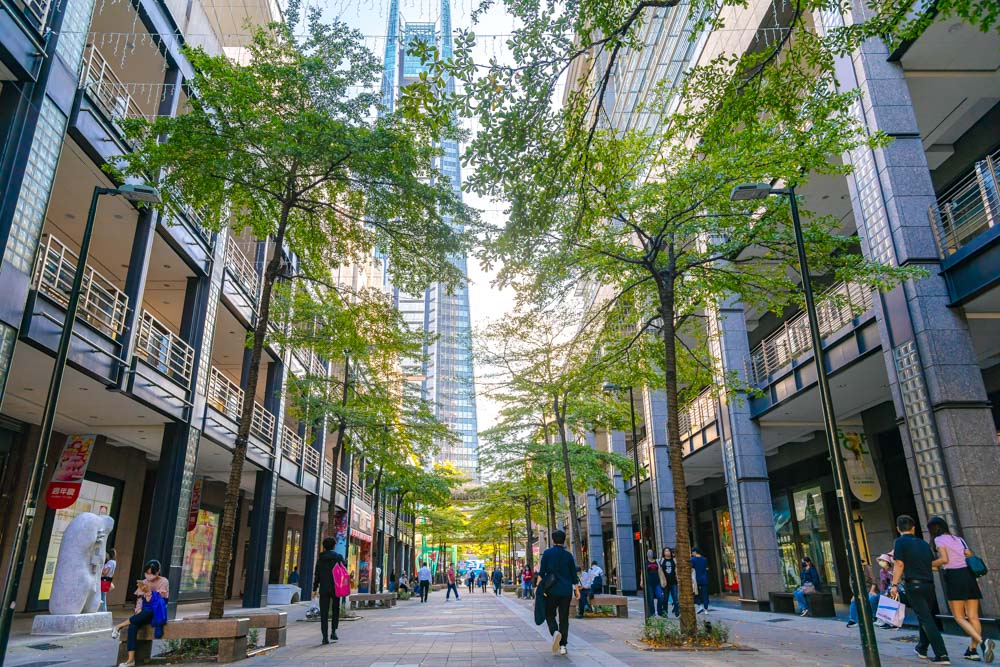
At its south end, it pierces the two lengthy low-rise buildings of Vieshow Cinemas Taipei Xinyi. Vieshow screens the cream of regional filmmaking as well as all the latest Hollywood blockbusters. Its Chianti promenade area is a top choice for releases of new music, concerts, movie promotions, and autograph signings.
At its south tip, Chianti Avenue T-intersects with a wide, tree-lined east-west pedestrian avenue-cum-plaza. On its south side is another architectural spectacle, Taipei Nan Shan Plaza (you’re right beside Taipei 101 now). This locale is especially popular with expats and foreign travelers because, along the east-west plaza, the Vieshow buildings and adjacent ATT4FUN building are lined with outward-facing eateries, cafés, and bars with comfy tree- and umbrella-shaded outdoor seating, creating what is perhaps Taipei’s best and quietest people-watching hotspot.
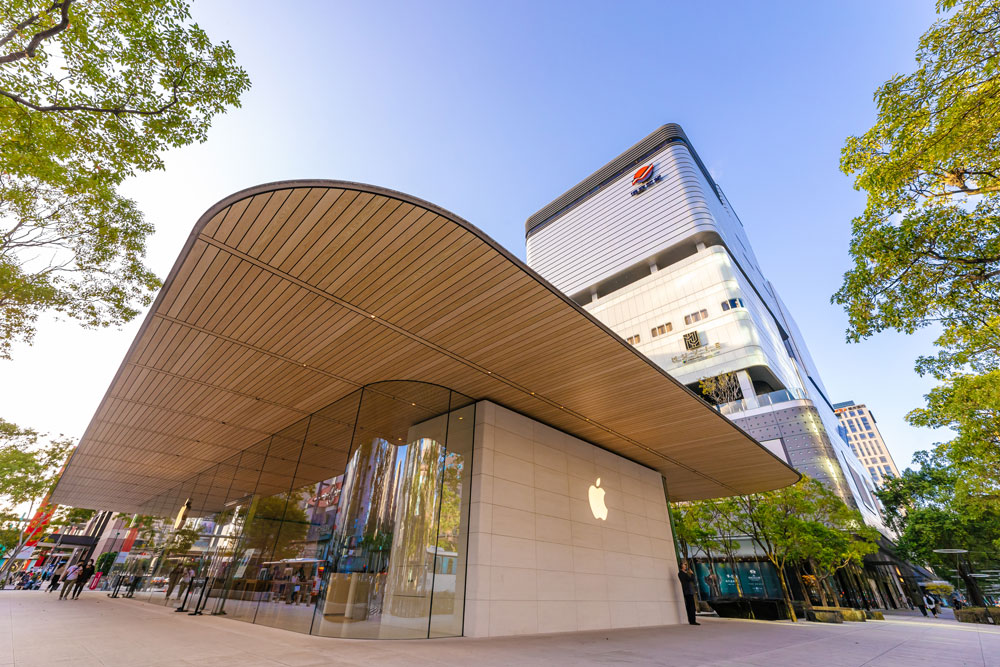
The grandiosely conceived Taipei Nan Shan Plaza complex has three structures: a 48-story, 272m-high office tower with some commercial floors (Taipei’s second-tallest building), the 7-story Breeze Nan Shan mall, and a diamond-shaped entrance building with an open cultural-arts space. The mall building consists of a series of stacked cubes of varying dimensions, like building blocks, their staggered positioning creating a series of rising terraces greened with trees; the overall visual effect of the three structures is of a forest-splotched mountainside, consciously celebrating Taiwan’s soaring mountainous terrain.
Time for a lunchtime sit-down. Your list of possibilities falls just short of endless. Two especially tasty choices are Kuai Chao and Sinchao Rice Shoppe. Kuai Chao, in the Far Eastern Department Store Xinyi A13, serves creative upscale Taiwanese-style dishes built on classic stir-fry cuisine amidst upscale trappings featuring mood lighting from small European-style chandeliers and bright light-tone Scandinavian-style wood furnishings. Among the most in-demand – and enticingly named – chef works are the Typhoon Shelter Soft Shell Crab (fried pork version available) and Stir-fried Crispy Chicken with Hua Diao Wine.
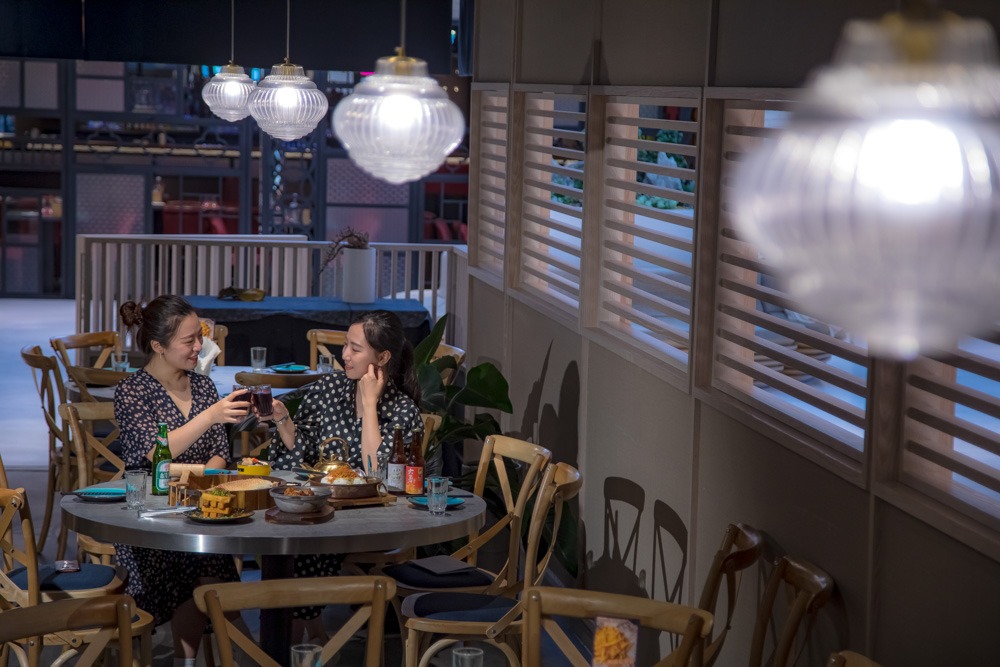
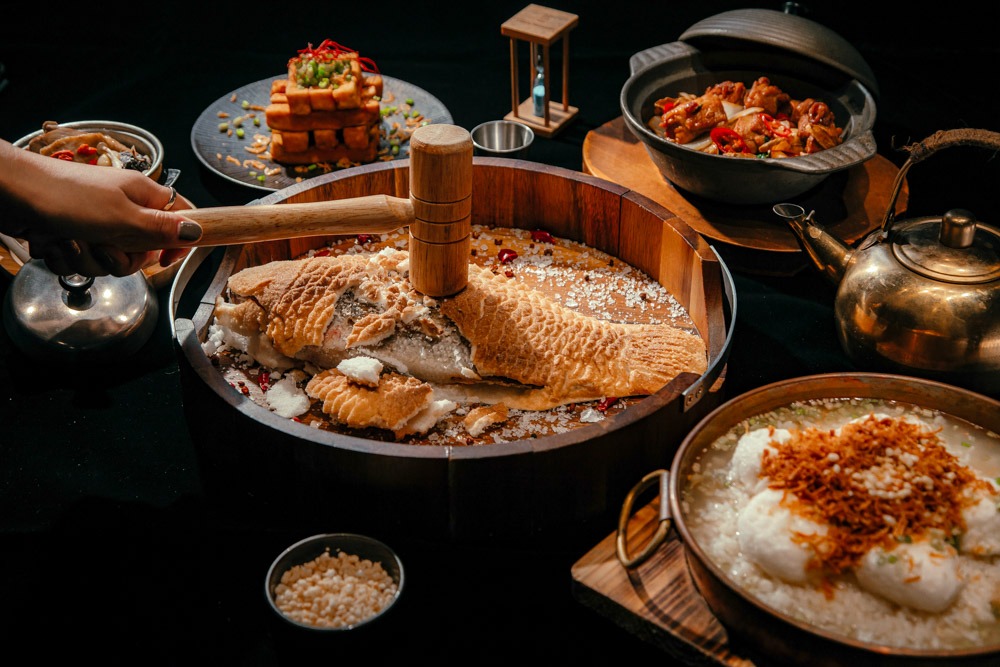
Kuai Chao | 筷炒
Add: 14F,No. 58, Songren Rd., Xinyi Dist., Taipei City
(inside Far Eastern Department Store Xinyi A13 Store)
(台北市信義區松仁路58號14F)
Tel: (02) 2758-0520
FB: www.facebook.com/kuaichao.taipei
IG: kuaichao.taipei
In the Breeze Xin Yi mall, overlooking its spacious covered square in front through almost full-wall glass, Sinchao Rice Shoppe is a Michelin Bib Gourmand selection. The dark-wood decor emulates US Chinatown diners of the early 20th century. The cuisine liberally reinterprets the “old and new Taiwanese cuisine” of Kaohsiung, a port city in Taiwan’s deep south, with many distinctly European haute cuisine flourishes introduced. Exemplary signature creations include the Fresh Lobster Butter Fried Rice with Fennel and Sauteed Beef Ribs with Fermented Chinese Cabbage, and the stir-fry creations are consummately wok hei.
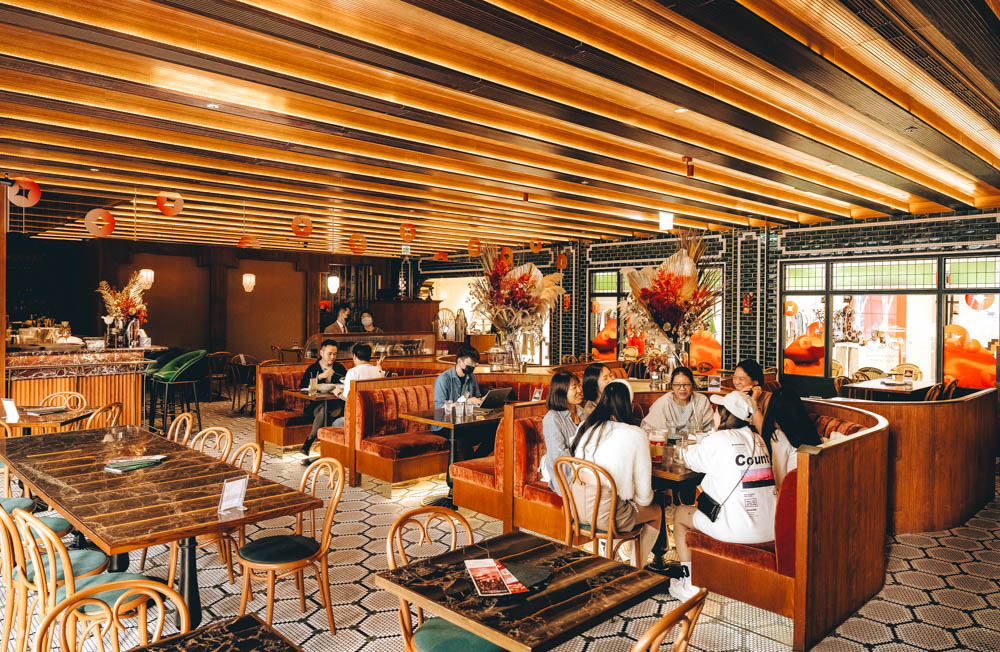
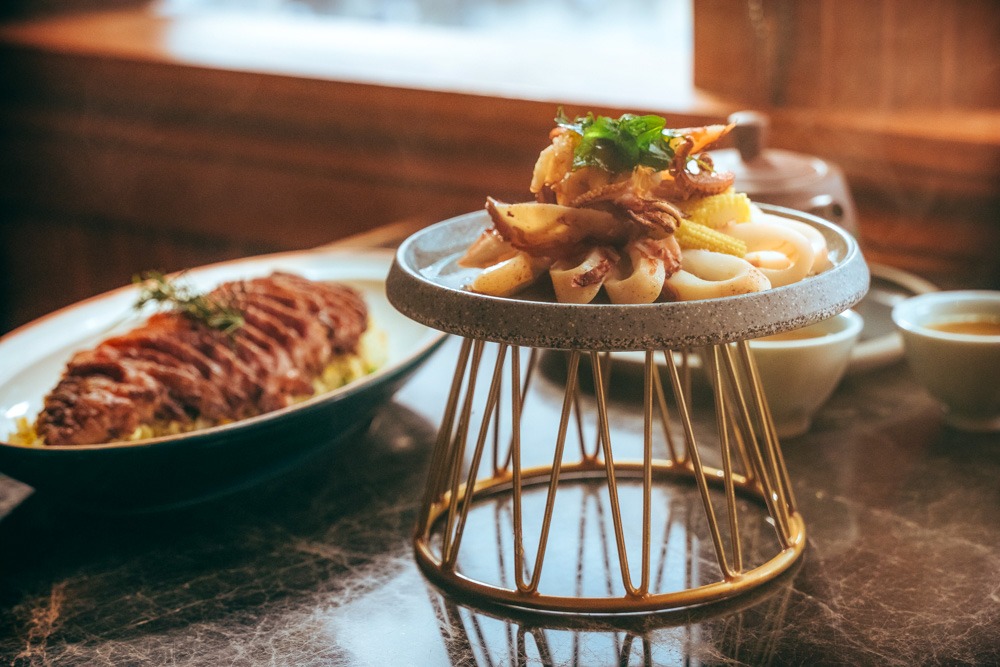
Sinchao Rice Shoppe | 心潮飯店
Add: 2F,No. 68, Sec. 5, Zhongxiao E. Rd., Xinyi Dist., Taipei City
(inside Breeze Xin Yi)
(台北市信義區忠孝東路五段68號2樓)
Tel: (02) 2723-9976
FB: www.facebook.com/sinchaoriceshoppe
Songshan Cultural and Creative Park
Let’s now walk ten minutes from the commercial district’s northwest corner, along Zhongxiao West Road, to Songshan Cultural and Creative Park, located across Zhongxiao from the Sun Yat-sen Memorial Hall grounds. The dense constellation of concrete and wood-built heritage buildings here formed a tobacco factory complex opened by the colonial Japanese in 1937. Production eventually ceased in 1998, and the compound was alchemized into a hub for cultural-creative exhibits, performances, and retail operations in 2011.

The park’s one newly constructed structure is the 14-story Taipei New Horizon Building, designed as a “cultural-creative factory,” home to the elegant Eslite Spectrum Songyan, exhibition and performance facilities, offices for cultural-creative concerns, and a hotel. The Eslite operation is a combination of a bookstore and department store; founded in 1989, the Eslite group introduced the refined retail experience to Taiwan. Its large bookstores are exquisitely designed; this outlet is now open 24hr.
Within the department store, Kinjo is a Taiwanese metalwork jewelry brand that offers regular silversmith experience workshops. Kun’s Crystal supplies glassblowing sessions, enabling you to take molten glass right from the furnace and fashion your own vase, glass, or plate/dish.
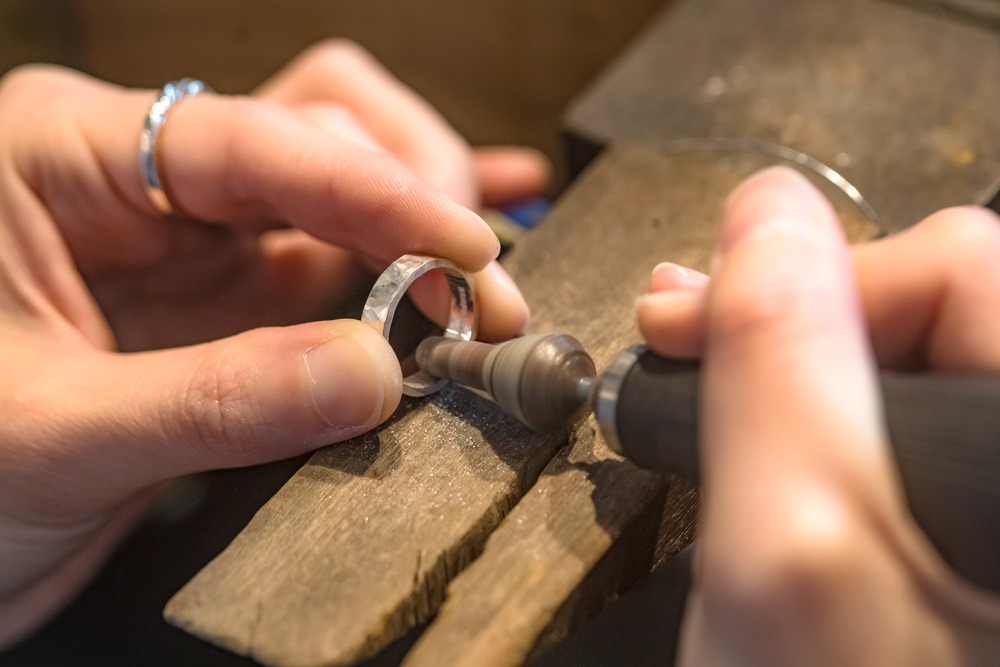
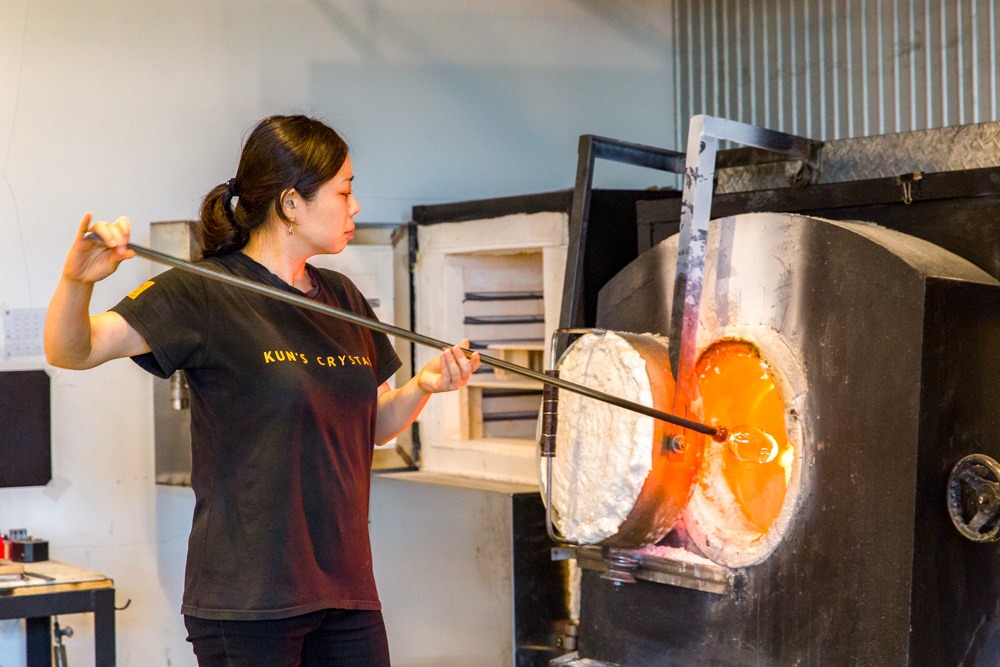
Sui Sui Life, in one of the former warehouses, is another outlet of a Taiwan brand chain. This retail operation is set up as a cultural-creative market and performance space, providing local indie handicraft designers with a display platform and inviting music creators, street performers, and other artists to showcase their talents.
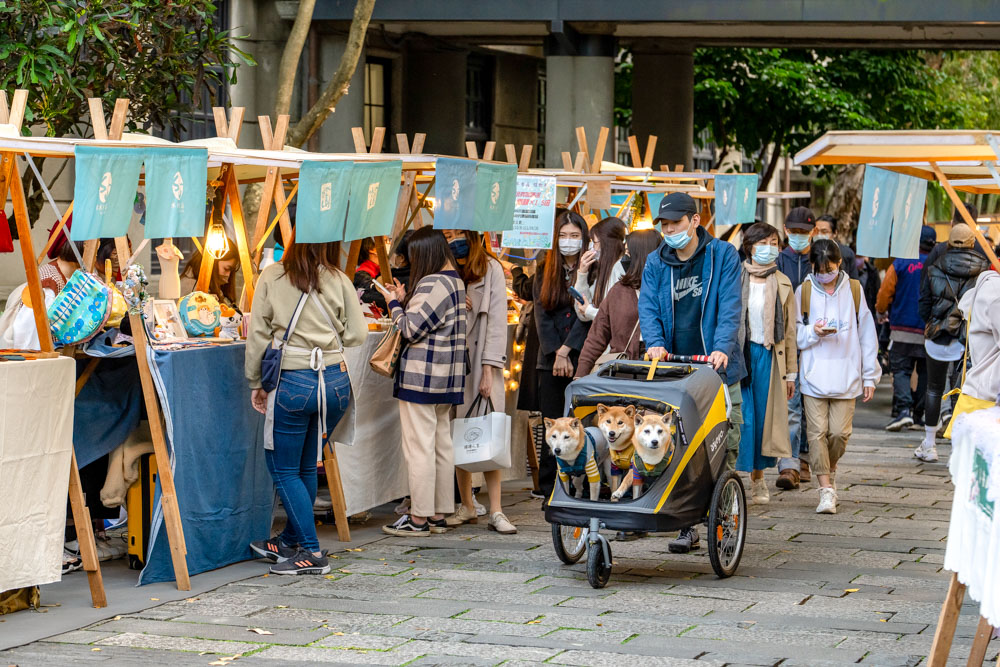
The enchanting time-travel Not Just Library, located in the former women’s bathhouse facility, calls for visitors (small entry fee) to “immerse” themselves in reading, serving as a “bathhouse of books” to calm the mind and cleanse body and soul. A unique sunken reading section has been built into a former bathing pool cavity, and a large inner doorway leads into the original enclosed courtyard-style garden.
The large former boiler-room building is now occupied by a Cama Coffee Roasters outlet, part of a local coffee shop chain. The boiler room supplied thermal energy to the full complex, along with steam for tobacco fumigation and boiled water for the bathhouses.
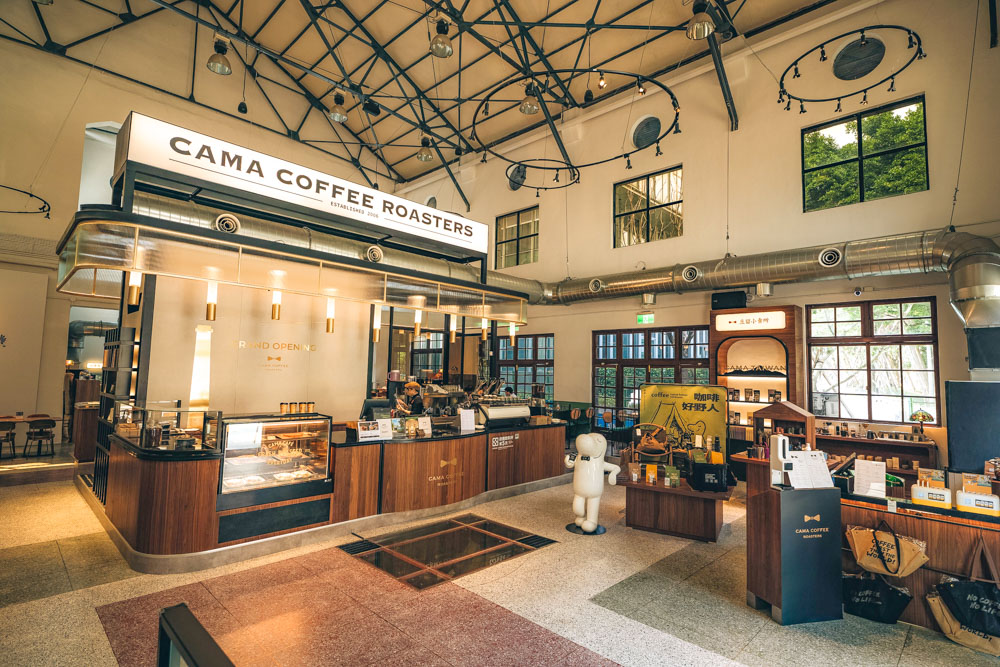
Songshan Cultural and Creative Park | 松山文創園區
Add: No. 133, Guangfu S. Rd., Xinyi Dist., Taipei City
(台北市信義區光復南路133號)
Tel: (02) 2765-1388
Website: www.songshanculturalpark.org
Taipei Dome
The gleaming metallic exterior of Taipei Dome, which seats about 40,000, is a spanking-new architectural icon added to the cityscape in late 2023. The multipurpose stadium – the Chinese name translates as “Taipei Big Egg” – is on the Zhongxiao/Guangfu roads intersection, on a plot carved from the original tobacco factory grounds. There is unobstructed access between the dome grounds and the park. At exterior ground level, a necklace of stylish-façade/-interior eateries and bars is strung out around the dome’s base. Below ground, a wide, curving corridor runs from the metro station under Zhongxiao Road to the main dome entrance area on the stadium’s east side, along the dome’s south-side base, lined with such casual-service operations as a McDonald’s, MOS Burger, and FamilyMart convenience store. All these businesses operate normally, i.e., not just during events inside the dome.


Taipei Dome | 台北大巨蛋
Add: No. 515, Sec. 4, Zhongxiao E. Rd., Xinyi Dist., Taipei City
(台北市信義區忠孝東路四段515號)
Tel: (02) 2722-8811
Website: www.farglorydome.com.tw (Chinese)
Pashih
Finish up your long walking day with a unique East Asia refreshment. Pashih is a cozy, bright, airy eatery in the grid of lanes and alleys east of the cultural-creative park, brimful with boutiques, cafés, and eateries. An outlet of a well-known Taiwan brand, it’s a “Mesona Specialty Store” selling mesona – i.e., grass jelly/herb jelly – treats. Grass jelly is served cold to cool in summer and hot to warm in winter, and is also believed to have medicinal benefits, birthing a Chinese name that translates as “immortal/celestial jelly.” The menu categories are Grass Jelly, Grass Jelly Ice, Grass Jelly Tea, and Winter Limited.

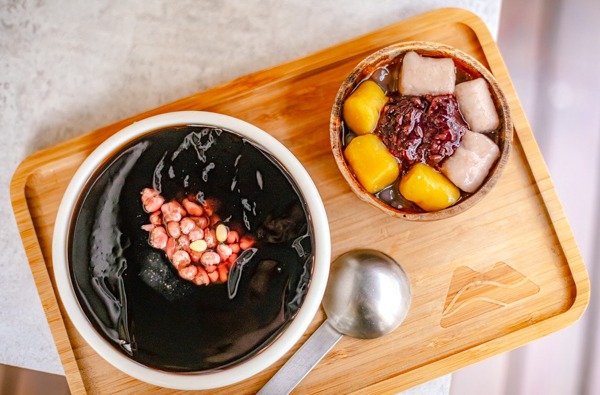
Pashih | 八時神仙草
Add: No. 12, Aly. 22, Ln. 553, Sec. 4, Zhongxiao E. Rd., Taipei City
(台北市信義區忠孝東路四段553巷22弄12號)
FB: www.facebook.com/godlike1019
About the author
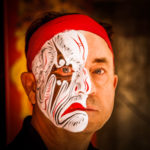
Rick Charette
A Canadian, Rick has been resident in Taiwan almost continually since 1988. His book, article, and other writings, on Asian and North American destinations and subjects—encompassing travel, culture, history, business/economics—have been published widely overseas and in Taiwan. He has worked with National Geographic, Michelin, APA Insight Guides, and other Western groups internationally, and with many local publishers and central/city/county government bodies in Taiwan. Rick also handles a wide range of editorial and translation (from Mandarin Chinese) projects.



